This article was co-authored by Laura Marusinec, MD. Dr. Marusinec is a board certified Pediatrician at the Children's Hospital of Wisconsin, where she is on the Clinical Practice Council. She received her M.D. from the Medical College of Wisconsin School of Medicine in 1995 and completed her residency at the Medical College of Wisconsin in Pediatrics in 1998. She is a member of the American Medical Writers Association and the Society for Pediatric Urgent Care.
There are 13 references cited in this article, which can be found at the bottom of the page.
This article has been viewed 123,496 times.
Heat stress can occur when you are exposed to extreme heat and your body is unable to cool itself properly. It encompasses a continuum of severities, ranging from aggravating heat rash to life threatening heatstroke.[1] Each type of heat stress has slightly different symptoms.
Steps
Recognizing the Types of Heat Stress and Providing First Aid
-
1Be alert for heatstroke. This is the most severe form of heat stress and it can be deadly. Heatstroke occurs when your body is unable to cool itself and your temperature rises to 103 degrees Fahrenheit (39.4 degrees Celsius) or higher.[2]
- Symptoms include hot skin (often without sweating, because the person may be too dehydrated to sweat), hallucinations, chills, severe headache, confusion, dizziness, slurred speech.
- Call emergency responders immediately. Not only can heatstroke be fatal, but it can also cause permanent damage to the brain, heart, lungs, liver, and kidneys.[3]
- Do not drink alcohol or caffeinated beverages (like soda).[4]
- Cool down while you wait for the ambulance to arrive by sitting or laying in the shade or in an air conditioned building. Wet your clothes or sit in front of a fan.
- When you arrive at the emergency room, the doctor may order tests to confirm heatstroke and start treatment to cool you down by using fans, ice packs or cooling blankets or by immersing you in cold water. These may include a blood test to monitor your electrolyte levels, a urine test to check for dehydration and kidney damage, muscle function tests, and imaging tests to verify that there has been not damage to your organs.[5]
- If necessary, you may be given intravenous fluids to rehydrate you.
-
2Identify heat exhaustion. Heat exhaustion occurs when you lose too much water and salt, usually through sweating. During heat exhaustion, the body temperature has risen slightly. It must be treated immediately to avoid progressing to heatstroke.[6]
- Symptoms include extreme sweating, weakness, tiredness, dizziness, confusion, nausea, vomiting, clammy skin, pale or flushed skin, muscle cramps, quick, shallow breathing.
- Rehydrate by drinking water or a beverage with electrolytes like a sports drink or fruit juice.
- Lower your body temperature by sitting or lying quietly in the shade or an air conditioned building,taking a cool shower, or fanning your skin.
- Seek medical care if you worsen or don't improve within 1 hour or if your temperature reaches 104°F/40°C or higher.
Advertisement -
3Recognize heat syncope. Heat syncope occurs when you suddenly pass out or start to black out. Risk factors include dehydration or being in a hot climate that you are not used to, especially if you are sitting or standing for a long time, or get up too quickly.[7]
- Symptoms include fainting and light-headedness.
- Sit or lie down immediately when you feel symptoms coming on. Afterwards, rehydrate with water, juice or a sports drink and take it easy in the shade or a cool place.
-
4Be aware of heat cramps. If you have been sweating extensively, chances are you lost a lot of water, salt and electrolytes. The reduced salt and electrolytes may make you prone to cramping.[8]
- Symptoms include muscle spasms in the abdomen, legs, or arms.
- Treat the cramping by stopping all strenuous activity and relaxing where it’s cooler.
- Replenish your electrolytes and salts with a sports drink or juice. Just drinking water may not solve the problem, because you need to simultaneously get electrolytes.
- Call a doctor if you have heart problems, are on a low salt diet, or if the cramps don't go away in one hour.
-
5Recognize heat rash. Heat rash can occur due to extreme sweating, particularly in hot, humid weather when your skin can get irritated by remaining damp.[9]
- It manifests as red bumps or small bubbles on the skin which might itch.
- Reduce your exposure to heat and wash and dry the area.
Preventing Heat Stress
-
1Wear loose clothing that covers your arms and legs. This will provide you with some shade, protect you from sunburns, and breathe better than tight clothing.
- Avoid dark colors which absorb the heat from the sun.
- Wear light, natural fabrics which will breathe better than synthetics.
- Wear a large brimmed hat for extra shade.
- Take breaks and rest when working or exercising in hot weather. If you can, avoid exercising or working outside during peak hours (11am-3pm) and overexertion.
-
2Be aware that you can still get sunburned through your clothes! If you are wearing loose weave fabrics, it may be necessary to put sunscreen on even on parts of your body that are covered.
-
3Monitor your fluid intake. By the time you feel thirsty, you are already dehydrated. Drink regularly during your heat exposure, even when you are not thirsty. In a temperate climate, men should drink about 13 cups/3 liters (0.79 US gal) of total beverages a day and women should drink about 9 cups/2.2 liters (0.6 US gal) of total beverages a day.[10]
- If you have reduced urine output or it is darker colored, then it is likely that you are not drinking enough.
- Do not drink alcohol, highly sugary drinks, or strongly caffeinated drinks.
- Avoid recreational drugs that may increase your sensitivity to the heat, such as amphetamines, cocaine, and ecstasy. Amphetamines and cocaine can increase your body temperature.[11]
-
4Give yourself time to get used to the heat after moving to a new climate. It may take several months before you have the stamina and endurance that locals have. Being out in the heat is exhausting, so chances are you will be more tired than you expect.
- Avoid strenuous activities during the hottest time of the day (10 am to 4 pm).
- Plan frequent breaks to give yourself a chance to cool down.
-
5Take extra care if you think you might be prone to heat stress. Groups who are likely to be extra sensitive to the heat include:[12]
- Elderly people
- Children
- Pregnant women
- Laborers working outside
- People moving from colder climates
- People with other health conditions, particularly those with asthma, high blood pressure, diabetes, lung problems or obesity.[13]
- People at risk for dehydration, including those who may be suffering from digestive conditions
- Some medications increase the patient’s sensitivity to the heat. These include some diuretics, antihistamines, beta-blockers, tranquilizers, and antipsychotics. Talk to your doctor before exposing yourself to extreme heat if you are on these medications.[14]
-
6Listen to your local weather station to be aware of heatwaves. This will enable you to be extra careful during times of unusually hot weather.
- Be aware that on humid days, your sweat evaporates more slowly making it more difficult for your body to remain cool.[15]
- Heat stress can happen fast within minutes, but it can also come on slowly due to prolonged exposure to heat over several days.
Warnings
- If you have symptoms of milder forms of heat stress which do not go away after drinking and retreating to a cooler place, call your doctor.⧼thumbs_response⧽
- Heat stroke can cause permanent disability or death if emergency treatment is not given. If you suspect you or someone else may be suffering from heat stroke, seek immediate medical help.⧼thumbs_response⧽
References
- ↑ http://www.cdc.gov/niosh/topics/heatstress/
- ↑ http://www.cdc.gov/extremeheat/warning.html
- ↑ http://www.mayoclinic.org/diseases-conditions/heat-exhaustion/basics/risk-factors/con-20033366
- ↑ http://familydoctor.org/familydoctor/en/prevention-wellness/staying-healthy/first-aid/heat-exhaustion-an-heatstroke.html
- ↑ http://www.mayoclinic.org/diseases-conditions/heat-exhaustion/basics/tests-diagnosis/con-20033366
- ↑ https://www.nhs.uk/conditions/heat-exhaustion-heatstroke/
- ↑ https://myhealth.alberta.ca/health/pages/conditions.aspx?hwid=not245139&lang=en-ca
- ↑ https://www.mayoclinic.org/first-aid/first-aid-heat-cramps/basics/art-20056669
- ↑ https://www.cdc.gov/niosh/topics/heatstress/heatrelillness.html#_Heat_Rash
- ↑ http://www.mayoclinic.org/healthy-lifestyle/nutrition-and-healthy-eating/in-depth/water/art-20044256
- ↑ http://www.mayoclinic.org/diseases-conditions/heat-exhaustion/basics/risk-factors/con-20033366
- ↑ http://www.cdc.gov/niosh/topics/heatstress/
- ↑ http://www.nhs.uk/Conditions/Heat-exhaustion-and-heatstroke/Pages/Introduction.aspx
- ↑ http://www.mayoclinic.org/diseases-conditions/heat-exhaustion/basics/risk-factors/con-20033366
- ↑ http://www.mayoclinic.org/diseases-conditions/heat-exhaustion/basics/risk-factors/con-20033366
- ↑ http://www.nhs.uk/Conditions/Heat-exhaustion-and-heatstroke/Pages/Introduction.aspx
About This Article
To recognize the symptoms of heat stress, look for extreme sweating, weakness, nausea, or muscle cramps. If you experience any of these symptoms, drink water or an electrolyte supplement to rehydrate yourself. You should also rest in a shaded or cool area, and seek medical care if your condition worsens. Additionally, call emergency responders immediately if you experience hallucinations, chills, headaches, or dizziness, as these could be signs of heatstroke, which can be fatal. While waiting for an ambulance, sit or lay down in the shade or in an air conditioned building. For more tips from our Medical co-author, including how to recognize the symptoms of heat cramps, keep reading!
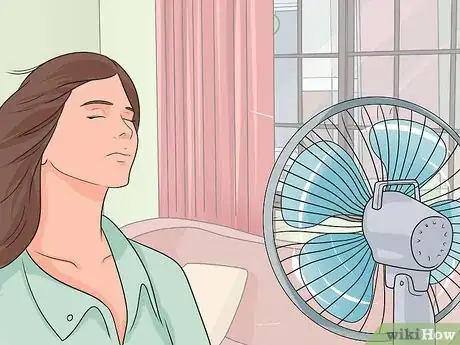
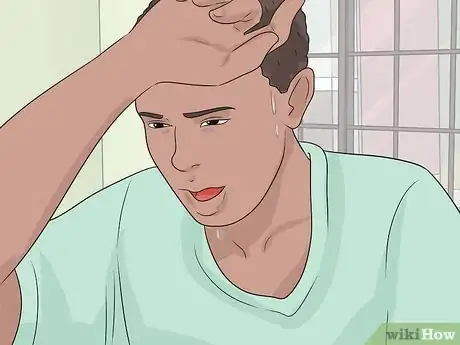
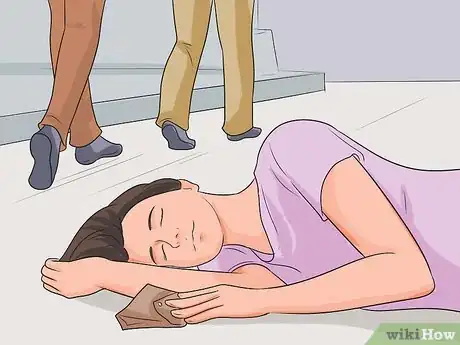
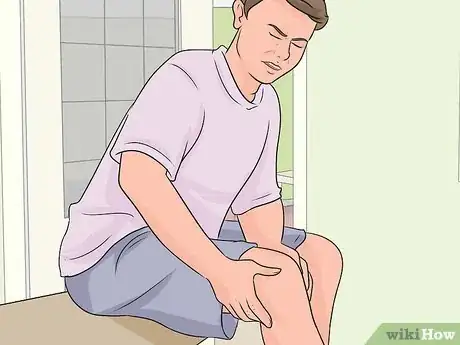
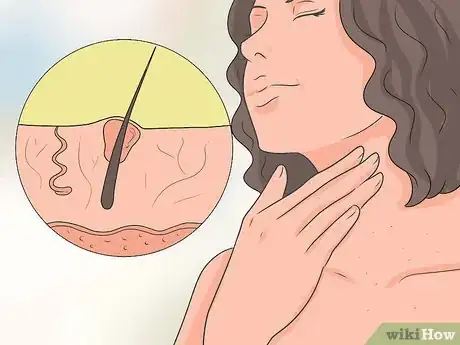
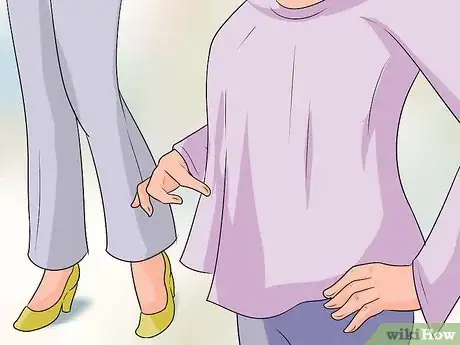

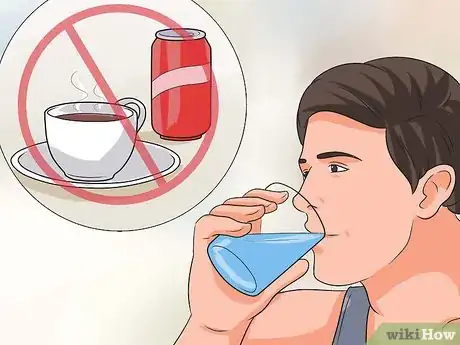
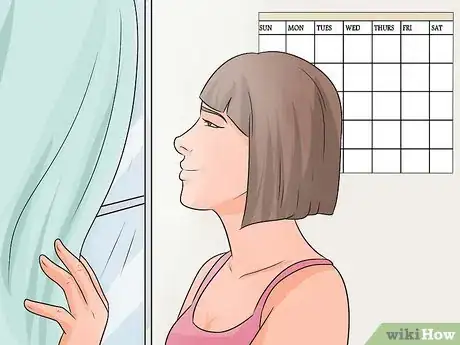
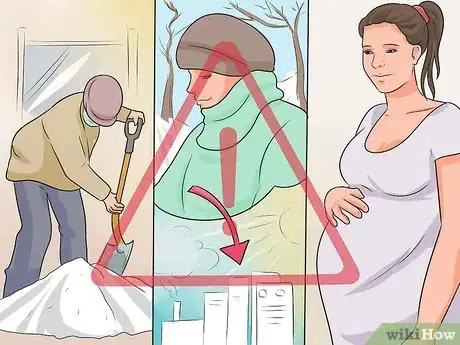
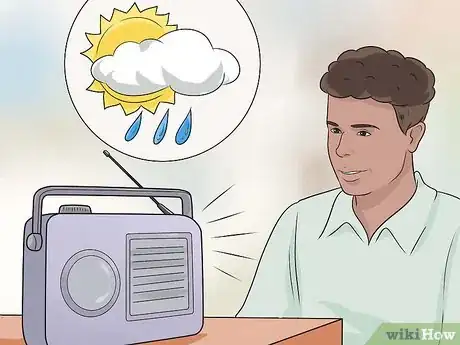




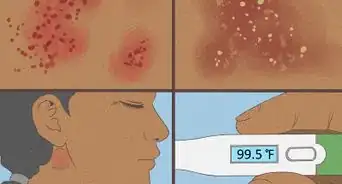
















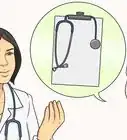

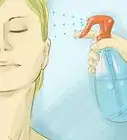




































Medical Disclaimer
The content of this article is not intended to be a substitute for professional medical advice, examination, diagnosis, or treatment. You should always contact your doctor or other qualified healthcare professional before starting, changing, or stopping any kind of health treatment.
Read More...